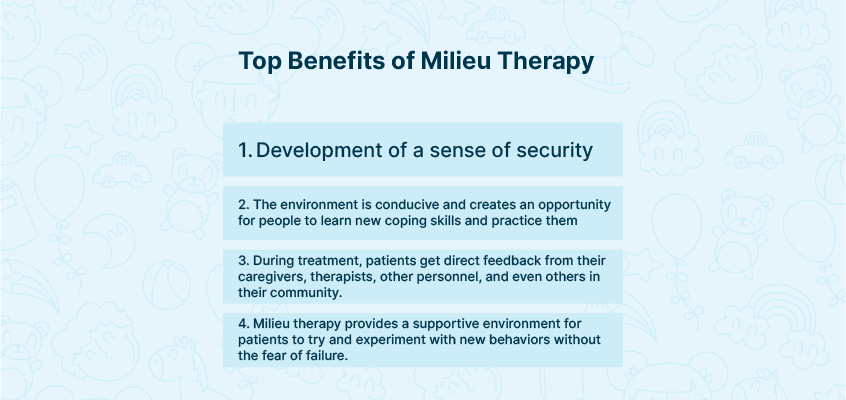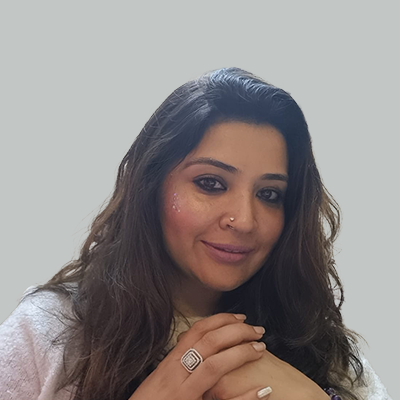Introduction
Mental health illnesses are usually challenging to manage and treat as multiple factors influence a patient’s condition. Therapies like Cognitive Behavioural Therapy, etc., are popular to help people with some mental health problems, but milieu therapy is now being used additionally to provide a more comprehensive approach. The idea of a therapeutic community is the main purpose of milieu therapy. Let’s understand more about it here!
Our Wellness Programs
What is Milieu Therapy in Mental Health?
Milieu therapy is a structured mental health treatment that is conducted in groups in a safe environment. It involves using everyday activities and a conditioned environment to encourage patients to interact with others in a community or a social setting. This therapy is a comprehensive one that can be used for a wide range of mental health illnesses, along with other treatments.
Milieu therapy focuses on helping patients with mental health illnesses receive treatment in a way that shapes their problematic behavior and makes them more responsible towards themselves as well as those around them. During milieu therapy, patients are encouraged to interact with other people in their group daily and practice what they have learned during their sessions to obtain a clinical impact on themselves.

Since milieu therapy occurs in a non-threatening and safe environment, it gives patients the confidence to open up and get comfortable enough to express themselves. This, coupled with the feedback they receive from nurses, therapists, and other personnel, has a positive impact on the patients and helps them recover faster.
Looking for services related to this subject? Get in touch with these experts today!!
Experts

Neelam Parwani

India
Life Coach
Experience: 5 years

Mansi Chawla

India
Psychologist
Experience: 12 years

Sapna Zarwal

India
Psychologist
Experience: 19 years

Deepti Gandhi

India
Life Coach
Experience: 6 years

Zabby Sharma

India
Life Coach
Experience: 11 years
What are the Major Components of a Therapeutic Milieu?
For a successful therapeutic milieu, it must contain a few major components:
1. Support
Milieu therapy works best in a lenient environment rather than a strict environment. Patients who receive treatment must be able to feel safe and secure to be able to adapt to the environment of the therapy comfortably. To make this happen, therapists and caregivers must offer individualized support to the patients.
When we talk of support, it can come in many forms– from developing a safe environment to establishing boundaries and expectations for each patient. To provide total support, a patient must feel safe and secure physically, mentally, and emotionally. The environment during treatment should ensure privacy so that each patient can seek the kind of support they need without any hesitation and be themselves.
2.Structure
After ensuring a strong support system, the therapy environment must have a defined structure as it helps build trust in the patients undergoing the treatment. The structure can have scheduled activities daily, fixed mealtimes, predictable meal menus, and free time. Patients can also be involved in social skill training, group therapies, personalized therapy, occupational treatments, art therapy, etc.
3. Consistency
The next component of successful milieu therapy, after setting up a structure, is consistency. Most mental health patients require consistency during their treatment. This also helps the therapists and other personnel who have behavioral expectations from the patients. Maintaining consistency also entails abiding by the boundaries and limits. Milieu therapists must have certain established norms that they expect their patients to follow throughout their treatment.
4. Validation
When patients participating in a milieu therapy feel safe, warm, and welcomed during the treatment, they begin to trust themselves and those around them. It is particularly helpful for people who feel vulnerable. Providing a safe environment encourages the patients to find the courage to explore new habits, life skills, etc., and their success in their endeavors acts as a validation for them. This is motivating and encouraging for patients to improve.
5. Involvement
A therapist is a role model during milieu therapy and is expected to practice what they preach. One of the many goals of milieu therapy is encouraging patients to get involved in social interactions. By participating in these interactions, the therapists can stimulate the patients to learn new methods, socialize and form new bonds.
Importance of Milieu Therapy in Mental Health
Treating mental health disorders requires a comprehensive plan, which is why milieu therapy is extremely important. There is plenty of research that states the effectiveness of milieu therapy in bringing down conflict behaviors in people suffering from different kinds of mental health illnesses such as schizophrenia. In schizophrenic patients, milieu therapy has been shown to reduce violent behavior.
The holistic approach of milieu therapy is unlike most other interventions as it incorporates daily activities in one’s routine such as brushing their teeth, eating, bathing, etc. Also, with help and support from social workers, therapists, and volunteers, milieu therapy becomes a multidimensional therapy for patients with mental health illnesses. What makes milieu therapy important is that it challenges patients to develop and maintain their values, which form the foundation for their social values. Some personal values that milieu therapy focuses on include self-awareness, self-confidence, decent behavior, etc.
While being extremely important in mental health treatment, milieu therapy also promotes collective interests as members of a milieu begin to identify and understand how they and their behavior can affect others. This is fundamental in the individual growth of a patient and makes them more responsible.
What are Examples of Milieu Therapy?
Since milieu therapy is used to treat many different mental health illnesses, this therapy can be used in several settings:
- Hospitals
- Outpatient clinics
- In rehabilitation facilities
- Private practices and
- At home
It is very common to see a therapeutic milieu in alcohol and drug rehabilitation setups, in de-addiction groups, weight loss groups, and many behavioral disorder clinics. There is no ‘best’ milieu setting as what suits one patient may not be right for another. The beauty of milieu therapy is that it is often customized for a patient and ensures that each one is comfortable in the environment while undergoing therapy.
How to Combat Depression Using Milieu Therapy?
Of the many mental illnesses that milieu therapy helps treat, depression is one of them. Here are some ways how this therapy can be useful to people suffering from depression:
- Milieu therapy is for the patient and not for their problem. Patients are encouraged to learn what their triggers are, communication skills, develop empathy, build confidence and leadership skills.
- Patients are also taught social and personal skills that can motivate them to pull out of their current depression state and be useful throughout their life too.
- Since milieu therapy is conducted as a group activity with personalized/individual sessions, it offers ample opportunities for patients with depression to interact with others, participate in activities that can help them regain their confidence in life.
- With ample socializing opportunities, patients with depression can discuss with others in their group how their day was, their thoughts and feelings, etc. Individuals also get constructive feedback from the therapists and other personnel that further motivates them to feel good about themselves and their life. This can help patients with depression greatly.
Top 5 Benefits of Milieu Therapy
The popularity and success of milieu therapy in treating mental health issues is proof of its many benefits. The top 5 benefits of milieu therapy include:
- Development of a sense of security. Patients feel safe, both emotionally and physically, during and after treatment, which enhances their overall well-being.
- The environment is conducive and creates an opportunity for people to learn new coping skills and practice them. People feel encouraged to adopt healthy behavior and practice it while still undergoing treatment.
- During treatment, patients get direct feedback from their caregivers, therapists, other personnel, and even others in their community. These individuals not just motivate a patient’s progress but also monitor it.
- Milieu therapy provides a supportive environment for patients to try and experiment with new behaviors without the fear of failure. The therapists and community that they work with during their therapy also offer constructive feedback that further increases the support.
- Milieu therapy also offers patients the freedom from the existing norms that may otherwise hinder their treatment and its progress. The safe and encouraging environment also allows patients undergoing the therapy to take responsibility for their behavior.
How to Find a Therapeutic Milieu Counsellor Online?
Depending upon the mental health condition you are looking out for, you can look for therapeutic milieus in your neighborhood. In most cases, your consulting doctor will lead you to some of the therapeutic milieu centers around you, but you can also find a few online. If you are looking for a personalized milieu therapy session, you can also look up therapeutic milieu counselors online. Therapeutic milieu counselors have additional training in this discipline and are experienced in conducting these interventions in groups for patients with different types of mental health illnesses. You can also check with the counselor where they practice or conduct their sessions and what they recommend to a particular patient.















